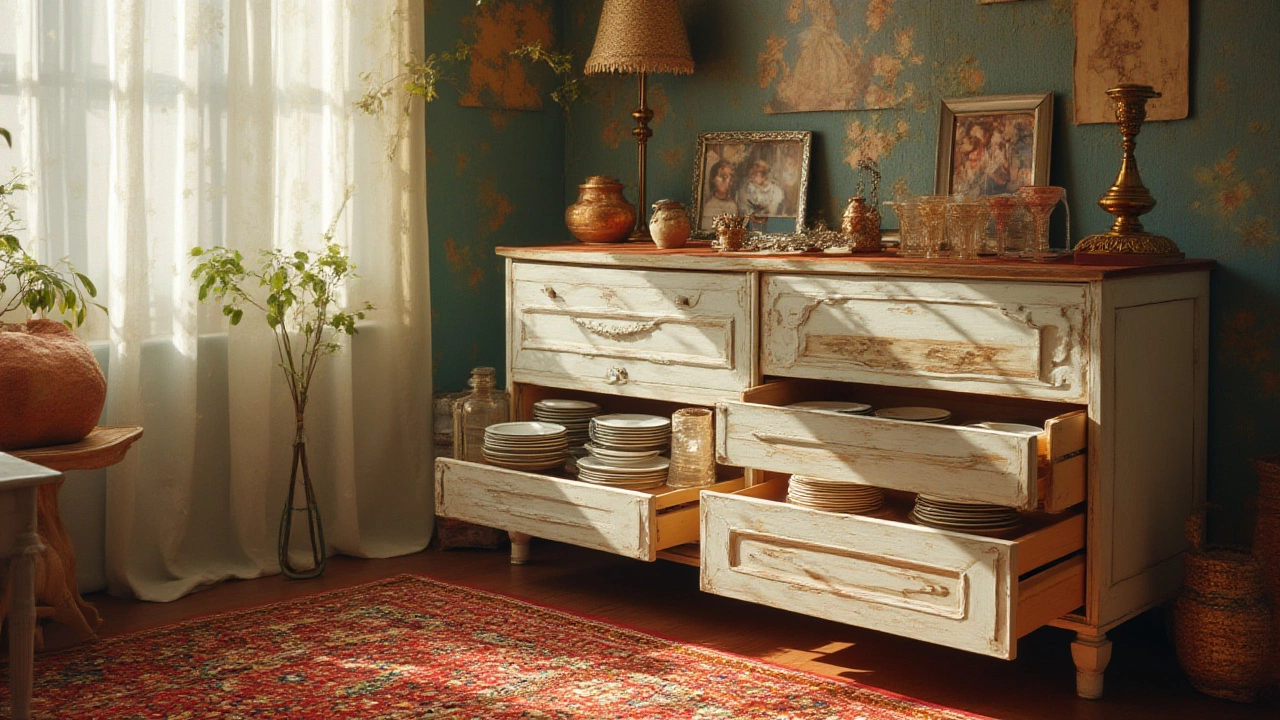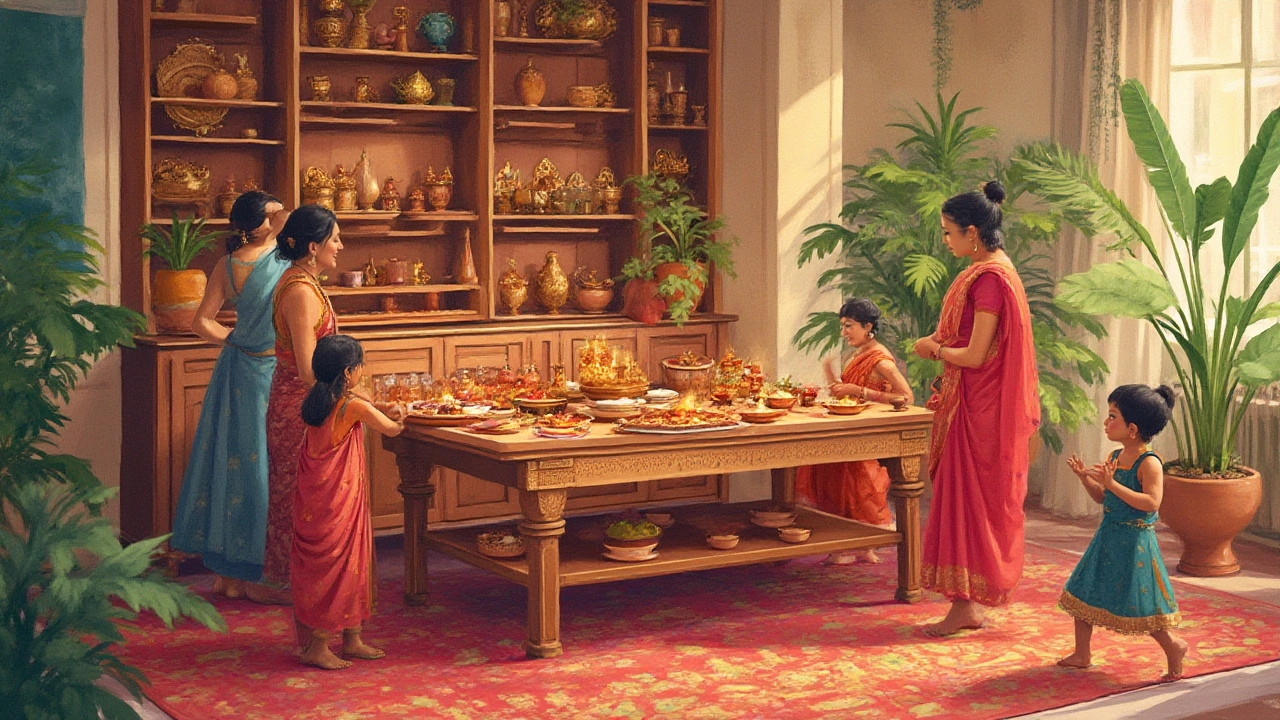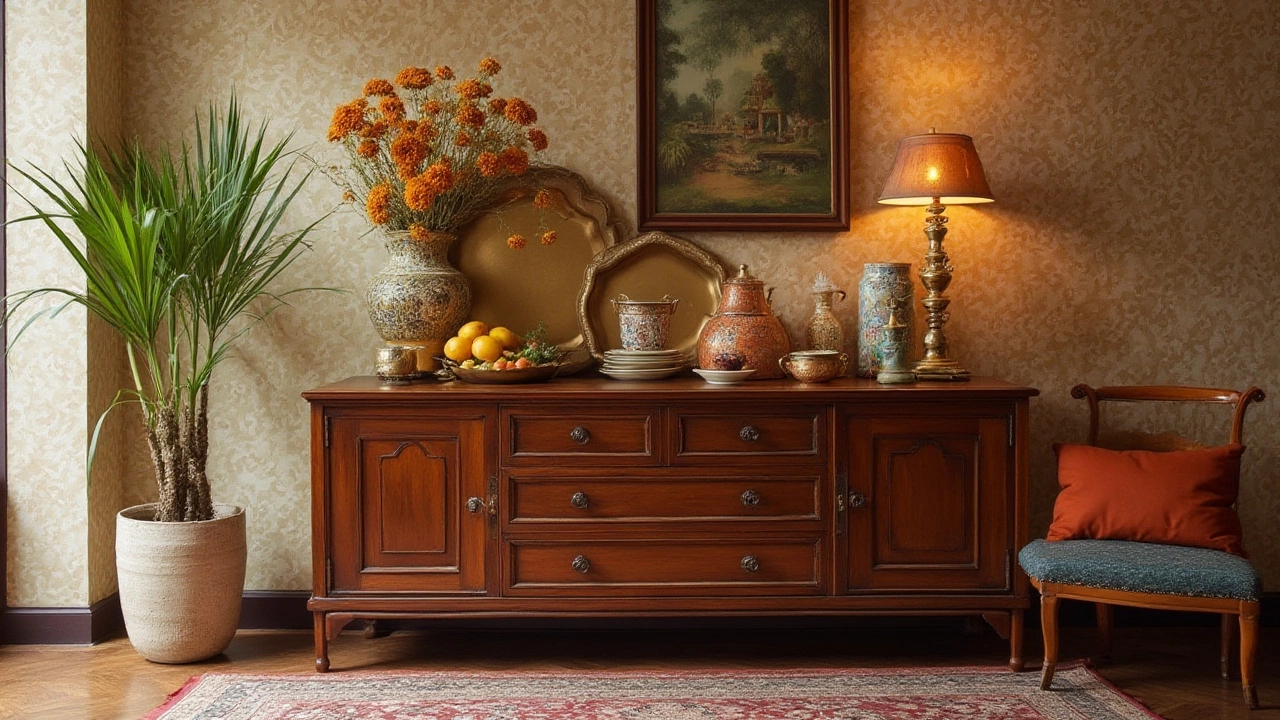Ask a group of interior designers what to put on a dresser in the dining room, and you’ll get a wild mix of answers. Some swear by the classic look: stacks of plates, candles, a runner, maybe some fresh flowers. Others see a dresser as untapped storage just waiting for a personality boost, not just a spot for table linens and serving platters. If you're tired of your dresser looking like it’s waiting to be useful or, even worse, trying too hard at the job, you’re not alone. It can end up as a catch-all for everything you don’t know what to do with. But what if turning it into a standout feature was easier (and more fun) than you thought?
Functional Finesse: Using Your Dresser for Dining Room Storage
The best place to start with a dresser is always function. In most homes, storage in the dining room is a constant battle – you’ve got holiday serving dishes, extra glassware, stacks of napkins, and miscellaneous tools that don’t really belong anywhere else. A dresser brings deep drawers and (if you’re lucky) cabinet space that a traditional sideboard or buffet sometimes lacks. Forget using those drawers just for table runners: tuck away placemats, specialty utensils, or your growing collection of cheese knives. If family dinners turn into game nights, you’ve suddenly got a hidden spot for decks of cards and board games.
Want to step things up? Install drawer organizers. You can break up a big, wide drawer into sections: napkin rings, candles, serving spoons, even tiny sauce bowls find their home. If you’re a fan of labeled chaos, small wire baskets keep like items together, so you’re not digging through a mountain of mismatched cutlery the next time you host.
For people who can’t say no to pretty dishes, a large dresser top is perfect for rotating displays. Showcase vintage ceramics or those patterned plates you only use twice a year. If space allows, add a row of lidded jars filled with biscotti or peppermints – guests will appreciate both the style and the snack. And don’t ignore the furniture’s vertical reach, either. Dressers sitting against a wall make it easy to hang a mirror or a piece of statement art above them. Mirrors bounce light, making your dining area feel more open; artwork starts conversations.
If you want to keep things ultra-tidy, look for adjustable trays inside a dresser so your table linens don’t wrinkle or end up with spilled candle wax. Also, storing tablecloths in rolls instead of folds helps prevent creasing – a tip learned the hard way after fishing out wrinkled linen right before Fiona’s birthday dinner! In case you’re wondering how real people use their dressers, a recent survey by House Beautiful found that 47% of folks with sideboards or dressers in the dining room use them to store rarely-used serving dishes and partyware.
A lot of dressers double as mini-bars. Dedicate a drawer or two to wine openers, coasters, cocktail napkins, and straws. You could even set out a decorative tray with decanters or your best bottles on top, making happy hour a grab-and-go affair. The beauty of a dresser versus a bar cart? You can hide the mess, including those questionable cordials you regret buying.
Here’s something to chew on: According to The National Association of Home Builders, the average formal dining room is just 141 square feet, which isn’t much when you factor in a table, chairs, and traffic flow. So, using vertical storage and compact dressers helps you make every inch work harder.
If the dresser comes with a hutch or glass-front cabinet, show off glassware or bold ceramics. A quick tip – arrange tall items at the back and layer smaller favorites in front so nothing gets lost. Try adding battery-operated puck lights to highlight your display for evening dinners.

Styling the Surface: Decor that Makes Your Dresser Stand Out
Now for the part everyone sees: the top. This is where your dresser goes from “extra storage” to “dining room destination.” You want to balance useful with beautiful, so think both form and function. Start with an anchor—usually a substantial piece like a table lamp, a vase of fresh flowers, or a bold sculpture. If you entertain, the lamp keeps things cozy for lingering dinners, and flowers always feel like a treat.
Layering is your friend when it comes to dresser decor. Stack some hardcover books related to food, wine, or travel. Place a candle on top of the stack, or nestle a small potted plant next to your reading material. Mixing heights and textures instantly creates interest. Try pairing a low bowl of seasonal fruit with a tall floral arrangement. This technique draws the eye, making the dresser’s surface look intentional—not cluttered.
Mirrored trays are an overlooked trick: they reflect light and keep grouped items together, so things feel pulled together rather than scattered. Line up a few decanters for a vintage bar vibe, or corral smaller items like salt cellars and napkin rings. When in doubt, odd numbers work better than even—three objects beat four every time for visual punch.
Table runners aren’t just for the dining table. Place one atop your dresser to add a splash of color or texture. If your dresser finish isn’t your style, runners and cloths can hide flaws and add personality. Change these out seasonally—think deep jewel tones for winter, linen or cotton for summer. It’s like swapping out throw pillow covers but for your dining room furniture.
Plants are another easy win. Try a leafy pothos trailing over the side or a collection of succulents in quirky pots. If you’ve got a sun-starved dining area, faux greenery works wonders. My wife swears by realistic-looking artificial olive branches, and frankly, at a glance, I can’t tell them from the real thing.
Consider a set of coordinated canisters or jars, especially if you like to bake. They look great lined up and keep essentials (sugar, tea, coffee) close at hand without screaming “kitchen zone.” Want some extra style? Use vintage tins or glass apothecary jars for nostalgic charm.
For special occasions or holidays, swap out your dresser’s decor for something festive. A few autumn gourds, a cluster of metallic ornaments for winter, or a row of pastel candles for spring keeps things fresh and makes your dining room feel like it’s ready for anything. If you’re like me and can’t resist a touch of whimsy, throw in a quirky figurine or two—a painted wooden animal, a retro clock, or even a bowl of marbles. It breaks up the staid “adult” vibe some formal dining spaces get stuck with.
Ever noticed how some homes always look photo-ready? It’s often because the dresser or buffet is styled, not just “decorated.” Keep the colors coordinated, repeat your accent color in two or three items, and remember to give everything a little breathing space—you want to be able to set down a tray of drinks without knocking something over.
If you want your dresser surface to do double-duty as a serving area, keep a neat stack of menu planning notepads or recipe cards handy. Add a sturdy trivet or large cutting board, so hot plates can go straight from oven to dresser top, minimizing the juggle during a busy dinner.
| Item Type | Percentage of Homes |
|---|---|
| Fresh Flowers | 71% |
| Candles | 64% |
| Books | 55% |
| Serving Trays | 46% |
| Bar Trays/Decanters | 41% |
| Art Objects | 38% |
| Plants/Greenery | 36% |
| Fruit Bowls | 30% |

Combining Personality with Practicality
Here’s the thing: the best dining rooms don’t just look good—they feel good to spend time in. That dresser is a big piece of the puzzle. Use it to reflect who you are, what you love, and how you want people to feel in your home. Maybe your dresser’s top has a lemon-shaped cookie jar you picked up on vacation, or maybe it’s where you display grandma’s old recipe box. Little things like these tell stories, spark conversations, and keep your dining space from looking like a furniture showroom.
If you want your guests to feel welcomed and maybe a tad jealous of your savvy, group framed family photos at one end, mixing black-and-white prints with color shots or playful candids. But keep it simple—no gallery wall explosion. Mix in some vintage finds: a brass candlestick, a bowl from the flea market, or an old cookbook stood upright as art.
The flip side of personality is staying practical. Don’t cram the dresser so full of trinkets you run out of space to set down trays or clean up that inevitable wine spill. Crates, bins, and baskets can corral kids’ art supplies or extra drinkware but keep them behind closed doors if possible. And yes, that old “less is more” mantra actually works—give some items a rest and rotate them seasonally instead of packing the whole collection on one surface.
Here are quick tips for mixing practicality and style on your dining room dresser:
- Choose a statement anchor piece like a lamp, sculpture, or floral arrangement to ground the display.
- Play with heights—tall vases with short bowls, or group candlesticks in three different sizes.
- Store daily essentials in nearby drawers so the top stays tidy for serving drinks or dessert.
- Change decor by season, not week; it keeps things fresh without feeling like a constant project.
- Use trays to organize bar items or serveware, making them easy to pick up and move when in use.
- Mix new and old: something new from your favorite boutique, something with history from a family collection.
If your dining dresser lives in a high-traffic spot (kids racing through, pets leaping for crumbs), make safety a factor—skip the wobbly ceramics in favor of wooden bowls or metal trays. And if the dresser is multi-purpose—say, you set up a tea station there or use it as a buffet during brunch—make it work for you, not just for the photos. Add a set of hooks on the side for aprons or tea towels.
Turns out, putting the right mix of things on the dresser in your dining room isn’t really about design rules or perfection. It’s about trial and error, shifting things around, and making sure you can actually use the space for what matters most. That’s the trick to a dresser that both looks good and makes your dining room feel like home.

